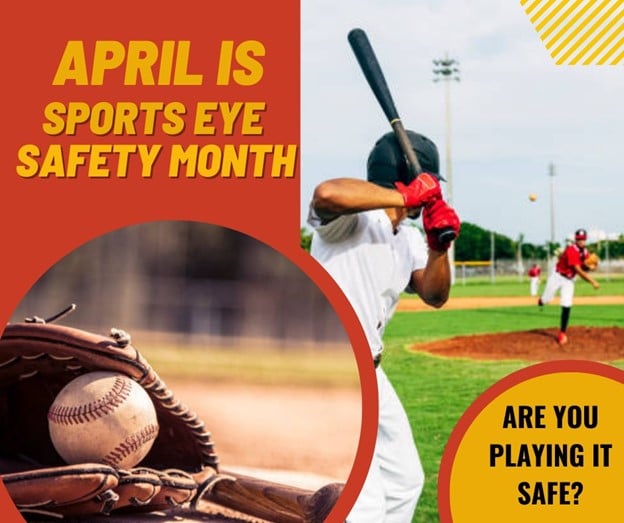Home » News and Events » April is Sports Eye Safety Month
April is Sports Eye Safety Month
Posted by: Florida Eye Microsurgical Institute in Eye Health

April is Sports Eye Safety Month, initiated by the American Academy of Ophthalmology (AAO) to raise awareness about preventing sports-related eye injuries. Every year, nearly 30,000 sports-related eye injuries are treated in emergency rooms in the United States. It is worth noting that ninety percent of these eye injuries could have been avoided if the victims had been wearing protective eyewear.
Take Me Out to The Ball Game
It is officially Springtime, so it’s time to gather your baseball gloves, bats, and helmets and head to the diamond to play ball. But have you remembered to add protective eyewear to your sports gear checklist? According to the National Eye Institute, baseball is the leading cause of sports-related eye injuries, and even major league players are not immune to the devastating effects of a flying baseball or bat.
It’s a common misconception that regular eyeglasses or sunglasses offer some protection. However, the truth is that non-protective eyewear can shatter upon impact, causing even more damage to your eyes. So, it’s crucial to ensure that you have the proper protective eyewear to keep your eyes safe while playing baseball.
Before going to the diamond field to play, take the proper steps to keep your eyes safe. Here are some safety tips from the American Academy of Ophthalmology that will help you keep an eye on the ball and eye safety first:
- If you require prescription eyewear, ask your eye doctor about certified protective sports glasses. For baseball batters and runners, helmets with attached safety glasses are available. Fielders can also get certified protective eyewear.
- Sports safety glasses must meet the safety standards set by the American Society for Testing and Materials (ASTM) and the American National Standards Institute (ANSI). It’s important to note that eyewear specifically designed to meet the Occupational Safety and Health Administration (OSHA) industrial standards is not sufficient for sports eye protection, as it does not meet the necessary sports safety standards.
- All prescription sports glasses should be made from polycarbonate because they resist shattering and provide UV (ultraviolet light) protection. If the protective lenses have turned yellow over time, replace them, as the polycarbonate material may have weakened with age.
- Sports goggles provide the best eye protection. However, they may not fit narrow faces well. In this case, the best option is certified sports glasses with 3-millimeter-thick polycarbonate lenses.
- Any player with vision loss in one eye should always wear eye-protective eyewear recommended by their eye doctor to protect their remaining vision.
Outdoor Activities and Eye Protection
If you’re someone who prefers outdoor adventures like hiking or mountain biking over team sports, it’s essential to prioritize UV protection. In addition to impact resistance, you should find good UV-blocking goggles. You can opt for polarized lenses to reduce glare or tinted lenses that enhance contrast and enable better visibility of terrain changes.
We wish you a fantastic and thrilling sports season filled with unforgettable moments! Remember, safety always comes first!

References: American Academy of Ophthalmology and American Optometric Association. This blog provides information and discussion about eye health and related subjects. The content provided in this blog and any linked materials are not intended and should not be considered medical advice. If the reader or any other person has a medical concern, they should consult with an appropriately licensed physician.
